 Why Demand for Phosphate Feed Additives is Growing
07. 20. 2018
#Feed industry
Why Demand for Phosphate Feed Additives is Growing
07. 20. 2018
#Feed industry

The phosphate feed additive market is predicted to grow considerably over the next few years. Increased meat consumption, the search for effective replacements for antibiotics, efforts to combat disease, and a need for increased livestock and poultry performance will all drive demand for this effective group of feed additives.
A recent analysis by phosphate and feed additive experts at the research company MarketsandMarkets, reports that, “The feed phosphates market was valued at $2.18 Billion in 2017; this is projected to reach $2.80 Billion by 2024, at a CAGR of 3.7% during the forecast period [2018 – 2024].”
Most notably, the growth rate has strengthened considerably, as a similar study of phosphate feed additive markets by researchers at IHS market analysis conducted two years earlier predicted growth rates of just 2%. Specifically, the report stated that, “Consumption of feed-grade phosphates is forecast to grow at 2.0% annually during 2015–20, led by China at 4.6%, Africa and the Middle East at 2.5%, and the United States at 0.9%.”
It is worth noting that there are numerous types of phosphate feed additive, including monocalcium phosphate (MCP), dicalcium phosphate (DCP), mono-dicalcium phosphate, tricalcium phosphate (TCP), magnesium phosphate, sodium phosphate, and even ammonium phosphate.
Interested in Phosphates? Then you may also enjoy the articles on the SPOTCHEMI blog page.
While DCP is the most commonly used phosphate feed additive, the market for MCP is predicted to grow the most over the next few years. As the MarketsandMarkets report explains, “The growth of the market for monocalcium phosphate can be attributed to several properties, such as the compound having the highest digestible phosphorus content, at 80%. Additionally, the high solubility and optimal phosphorus concentration of MCP also offer increased flexibility in dietary formulations.”
MCP – Animal Feed’s Most Effective Growth Supplement
MCP acts as an inorganic phosphate supplement and plays an important role in the animal feed industry. It provides animals with calcium and phosphorus, which helps to improve an animal's organism, metabolism, and the functioning of nervous, immune and reproductive systems thereby increasing productivity.
The increasing popularity of MCP was also noted in a recent report by the industry journal AllAboutFeed, which explains how, “The purified form of monocalcium phosphate is obtained by the reaction of calcium hydroxide with wet process phosphoric acid. Highly soluble and easy to handle, it can be used in mixed feed and minerals. Its usage in feed enhances the reproduction cycle of animals, in addition to the prevention of abnormal development of bones. Furthermore, MCP has the highest digestible phosphorus content of ~80%, which is the major reason why many feed manufacturers and producers are beginning to switch from DCP to MCP. The high solubility and optimal phosphorus concentration of MCP offer increased flexibility in dietary formulations.”
It is because of this versatility, high digestibility, and superior effectiveness that the MCP market is predicted to see strong growth in all regions. While Europe remains the dominant market with 26% of global consumption, IHS predicts usage will rise in China by 7%, as well as by 3.5% in other Asian markets.
However, South American farmers and feed manufacturers will be most affected, with MarketsandMarkets stating that, “The South American market is projected to grow at the highest CAGR from 2018 to 2024. The increase in the demand for animal-based products; growth of the regional population; rise in disposable incomes; the rise in urbanization, especially in Brazil and Argentina; and continuous expansions in the feed industry and animal husbandry sector will drive the feed phosphates market in South America.”

If you wish to learn more about feed additive markets, & agrichemical raw materials, then please take a look at the other articles on AGCHEMI’s blog page, including Microbial Protein Bacteria:Feed Raw Material of the Future, and Why Zinc Oxide Feed Additive Prices are High and Why it's still Worth it.
While there are environmental concerns over the use of phosphates as a non-sustainable, finite resource, at present rates of usage it is estimated by Pedro Sanchez, director of the Agriculture and Food Security Center at the Earth Institute that the planet has 300 to 400 years’ worth of remaining extractable deposits.
Furthermore, research is progressing in technology that can increase phosphorus recovery. These methods include biological phosphorus removal, chemical precipitation, crystallization, and a novel wet-chemical process to extract phosphates from waste fly ash from power stations. Similarly, several research teams are studying ways to extract phosphorus from waste water and sewage sludge, as most of the phosphorus animals and humans consume is excreted.
While at present these methods are not commercially viable, it is worth noting that the increased demand for phosphate feed additives will impact prices and could change phosphate recovery economics in the medium to long term.
For now, farmers and feed manufacturers can rest assured that there is sufficient rock phosphate to keep supplies running. However, as demand increases, and the market begins to grow at an ever-quicker pace, maybe it’s time to rethink feed additive strategies.
Maybe it’s time to take another look at the data on monocalcium phosphate feed additives. Maybe it’s time to unlock MCP’s value before market forces take effect.
For specific feed additive enquiries, you can contact AG CHEMI GROUP’s friendly sales team.

The AG CHEMI GROUP Sales Team
Photo credit: TaiChina, PrecisionNutrition, SPOTCHEMI, & YouTube
